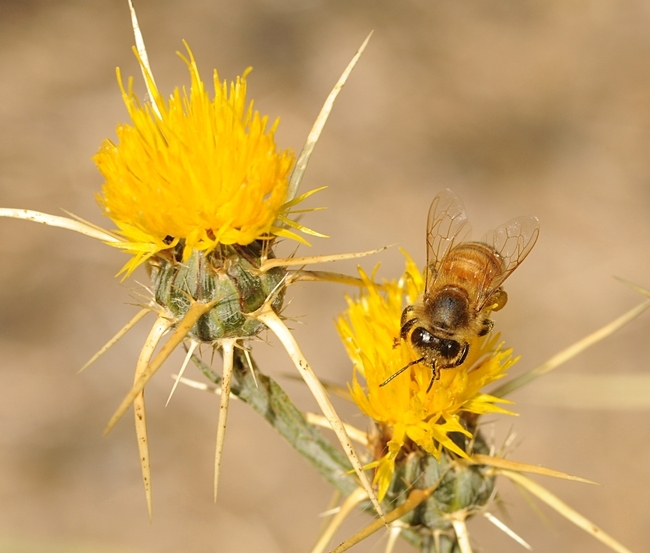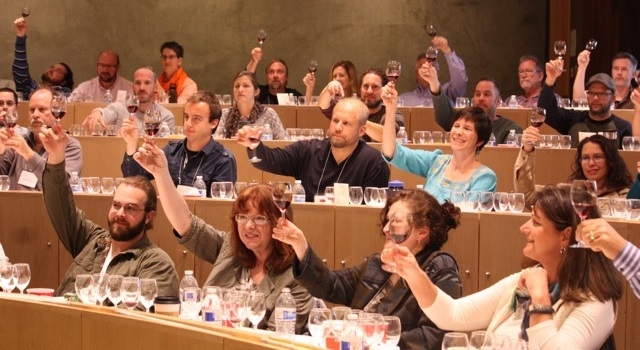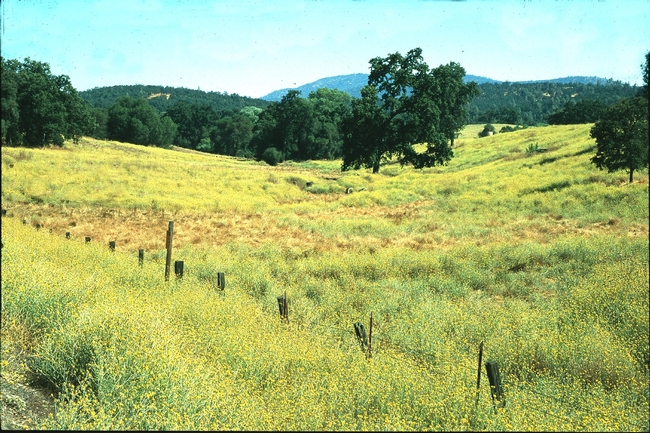
Posts Tagged: Yellow starthistle
Potential for late-season spraying of organic herbicides to control yellow starthistle
Valerie Eviner is a Professor of Ecosystem Management and Restoration in the Department of Plant Sciences at UC Davis. Yellow starthistle is a noxious weed common in many areas of California's grasslands, and is often a priority for control, due to its effects on decreased livestock...
Controlling yellow starthistle with burning
Here's UC Cooperative Extension Farm Advisor Scott Oneto showing us how to control yellow starthistle with burning: https://www.youtube.com/watch?v=szeuMYtNxdw
'All You Mead Is Love!' Enroll in UC Davis Online Course by Monday, June 1
Picture this: A honey bee foraging on yellow starthistle (Centaurea solstitialis), an invasive weed that farmers absolutely hate but one that beekeepers, honey enthusiasts and mead makers absolutely love. The UC Statewide Integrated Pest Management Program (UC IPM) targets the yellow...

A honey bee foraging on yellow starthistle, a weed farmers hate but beekeeper, honey enthusiasts and mead makers love. (Photo by Kathy Keatley Garvey)

Due to coronavirus pandemic precautions, the UC Davis mead courses are now online, and Mead Making 201 is scheduled June 22-23 and June 25-26. The deadline to register is June 1. (Photo courtesy of Honey and Pollination Center)
USDA approves release of weevil to control yellow starthistle
From the ANR News Blog on Sept. 19, 2019 The USDA has announced it will allow the release of a weevil (Ceratapion basicorne) in the United States to help control yellow starthistle, an invasive weed found in 40 of the lower 48 states, reported Capital Public Radio. The...
USDA approves release of weevil to control yellow starthistle
The USDA has announced it will allow the release of a weevil (Ceratapion basicorne) in the United States to help control yellow starthistle, an invasive weed found in 40 of the lower 48 states, reported Capital Public Radio. The weevils will initially be released in California.
Ceratapion basicorne is native to Eurasia, the same area where yellow starthistle originated. Yellow starthistle is thought to have been introduced into California from Chile during the Gold Rush. The weed readily took hold in California valleys and foothills, thriving in areas where the soil has been disturbed by animals grazing, road construction and wildland firebreaks. Today, yellow starthistle is a very common sight in vacant lots and fields, along roadsides and trails, in pastures and ranch lands, and in parks, open-space preserves and natural areas.
Capable of growing six feet tall and bearing flowers surrounded by inch-long spines, yellow starthistle reduces land value, prevents access to recreational areas, consumes groundwater and poisons horses.
Brad Hanson, UC Cooperative Extension weed specialist at UC Davis, says yellow starthistle thrives in part because of its prickly spines.
"It's not very palatable to any livestock, especially once it's started to flower . . . . Often times, the other grasses and more palatable plants are grazed and the starthistle persists and is sort of the only thing left,” he said.
Hanson says yellow starthistle can be managed on a small scale with chemicals, but that method just doesn't work with the scale of infestation in the state.
“It's difficult to control economically on the millions and millions of acres of rangelands or non agricultural lands that are sort of minimally managed,” he said.
The USDA's environmental assessment of the weevil found no significant impact of its release, besides helping to control yellow starthistle infestations.

